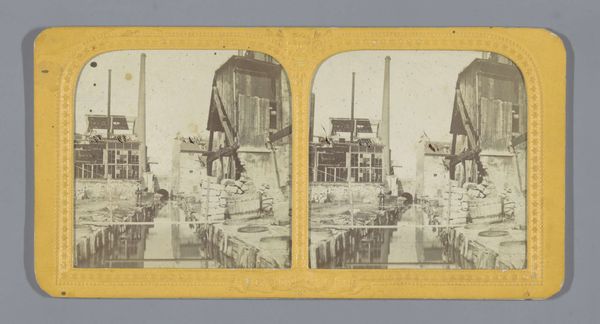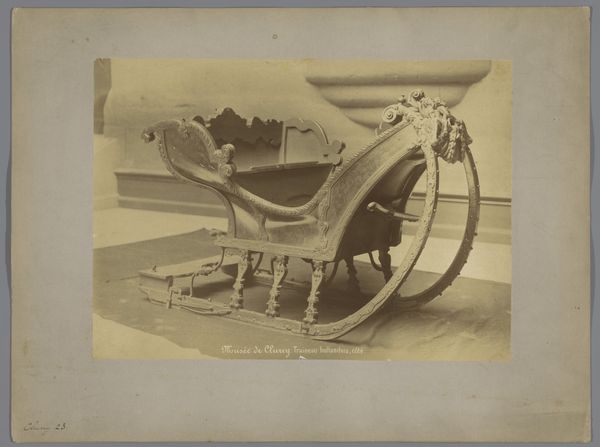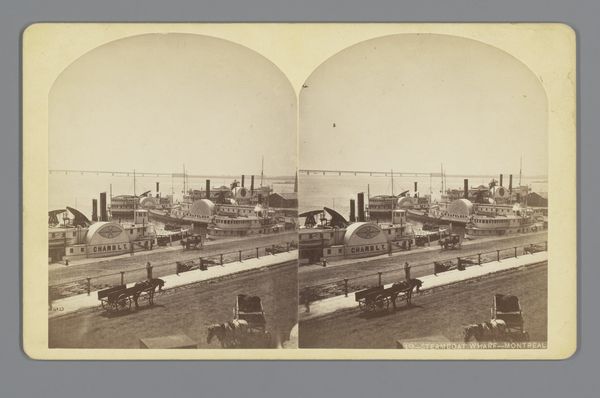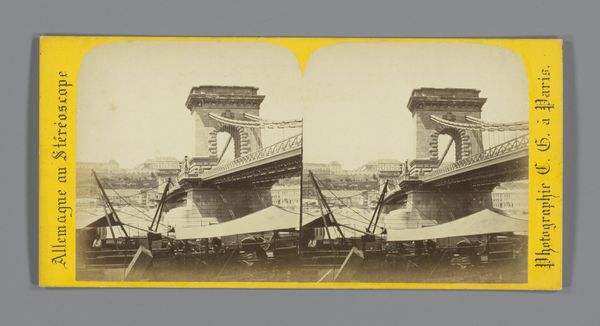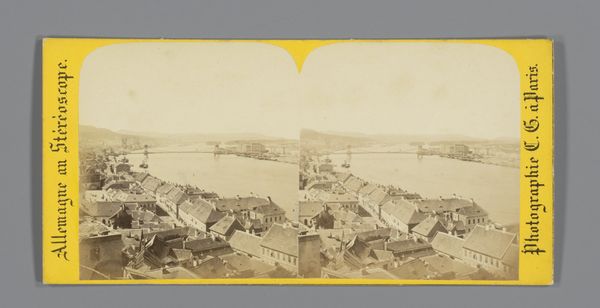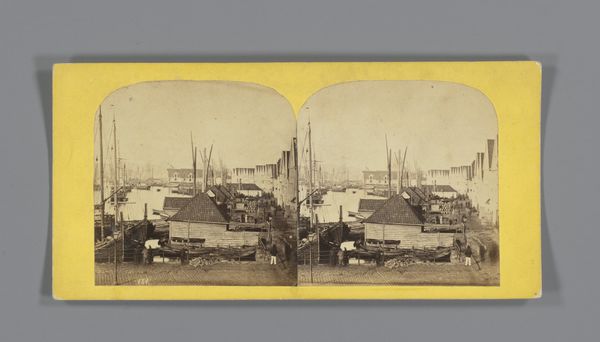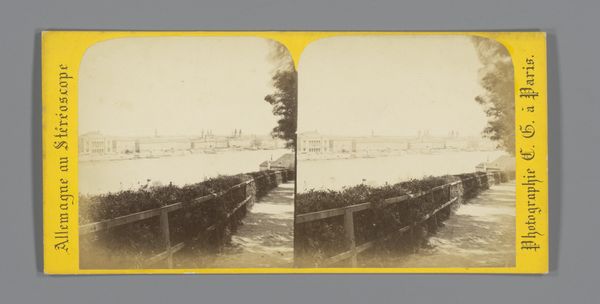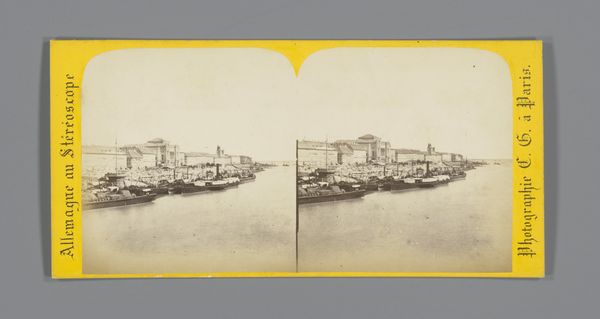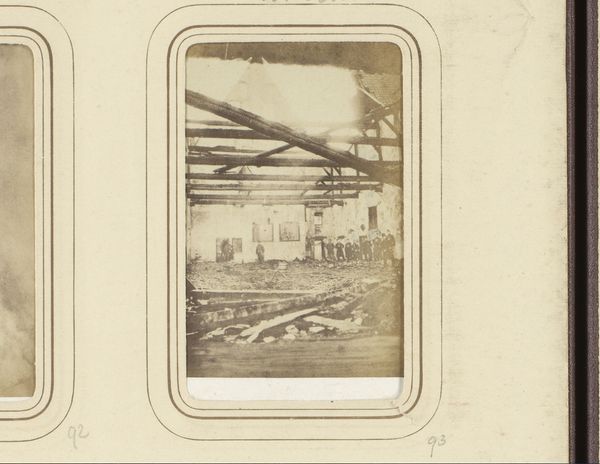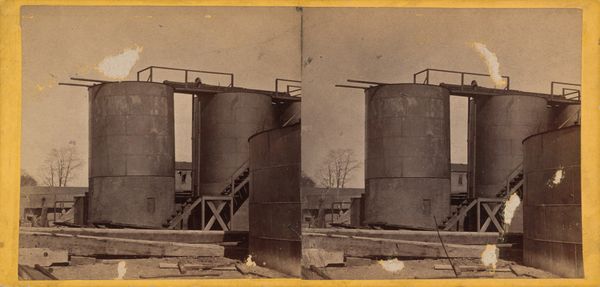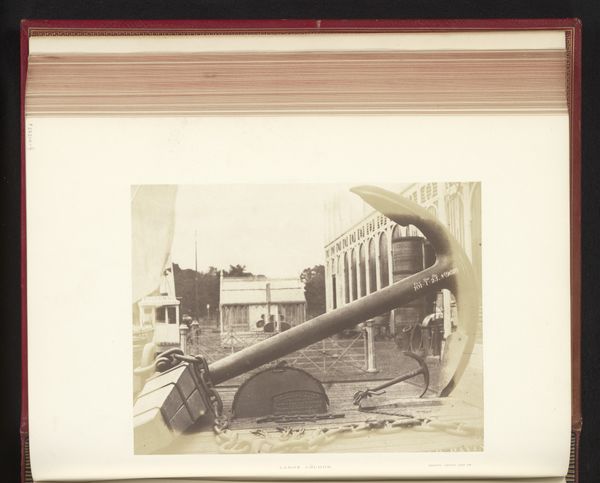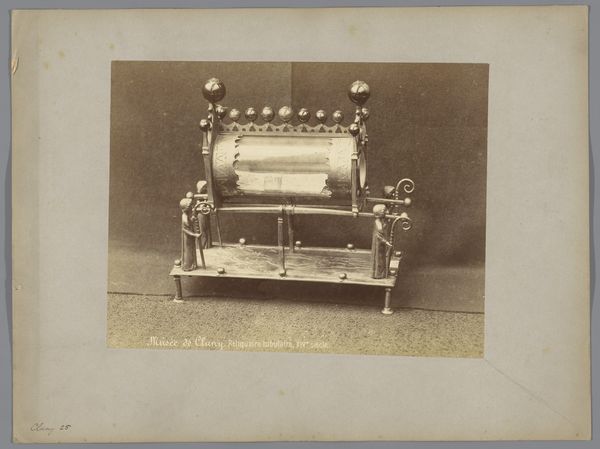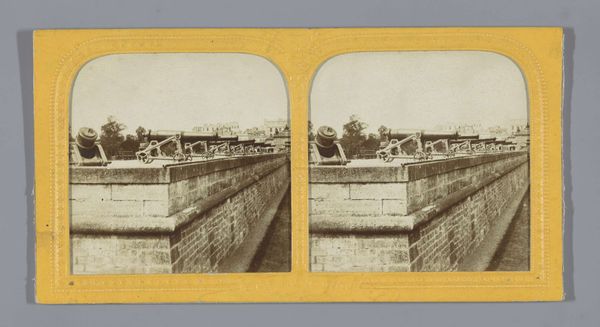
Dimensions: height 85 mm, width 172 mm
Copyright: Rijks Museum: Open Domain
Curator: Let’s turn our attention to this intriguing photograph: "Gezicht op de Kettingbrug over de Donau in Boedapest" which translates to "View of the Chain Bridge over the Danube in Budapest," a gelatin silver print by Charles Gaudin, dating back to 1868. What’s your initial take? Editor: It strikes me as remarkably still, almost staged. The sepia tones lend an air of bygone eras. You know, there's this looming structure that dominates the frame—it makes you feel so small against the grand scale of Budapest. Curator: That sense of grandeur is quite deliberate. The Chain Bridge was a major feat of engineering. Gaudin captured it just a few decades after its completion in 1849. Built after the 1848-49 Hungarian Revolution, the bridge was very deliberately used to assert imperial power through modernity and connection. It physically and symbolically bridged Buda and Pest. Editor: I see, that’s powerful context to consider. To what extent do you think this work is actually speaking about power and who has access to it? Because at this time, with so much urban renewal and wealth inequality, the picturesque can also reinforce the status quo by masking some underlying tensions. I find it a rather seductive but dangerous practice. Curator: Absolutely, urban landscapes in photographs like these always have something to say about the political atmosphere. This photo might reinforce the notion of progress and civilization, as they presented the Austro-Hungarian Empire's goals. On the other hand, the albumen print medium allowed it to reach audiences further beyond Hungary as they were easily reproducible and durable. Editor: I think you have a good point there. But it raises questions about distribution and access to imagery. Did Gaudin intend his photos to contribute to these sociopolitical narratives, or was it more about tourism and documentation? Because the people who would most likely consume it are the middle and upper classes with colonial mentalities. Curator: Gaudin was certainly tapping into the popular market for city views, appealing to travelers and those interested in far-off places. Yet, by framing the Chain Bridge so prominently, the architecture looms. Editor: So, it's this duality – a piece of documentation yet inadvertently commenting on structures of power, progress, and who is a stakeholder in this image? Curator: Precisely. It gives a glimpse into 19th-century Budapest but subtly promotes certain perspectives. It reminds us to question what we’re actually viewing, or rather what is being strategically represented through art. Editor: Yes, thank you, this has prompted new inquiries and awareness of this remarkable photograph! Curator: Indeed! There is always more than meets the eye.
Comments
No comments
Be the first to comment and join the conversation on the ultimate creative platform.
